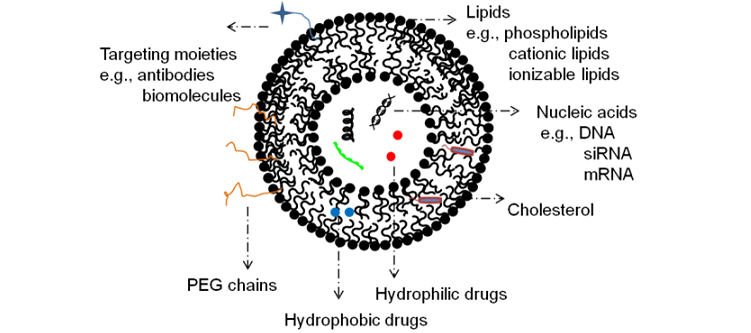Lipid based self-assembled nanostructures for therapeutic delivery applications

Keywords:
Nanoliposomes, Lipid nanoparticles, Gene delivery, Drug delivery, Clinical formulationsAbstract
The evolution of lipid nanoparticles (LNPs) has been remarkably interesting and in beneficent directions for food and health industries working towards human well being. Since the discovery of the first-generation lipid based self-assembled nanostructures, i.e., liposomes in the 1960s, it has witnessed significant advances in their development and distinctive potential in different application domains. Based on the composition and structure, these lipid based structures have varied from liposome to lipid nanoparticles such as nanostructured lipid carriers (NLCs) and solid lipid nanoparticles (SLN) to overcome certain limitation pertaining to their use in different fields. The outstanding application of LNPs as therapeutic delivery systems has made them key players to treat different human disorders including the fatal cancers. Their life-saving global contribution has recently been witnessed in the form of mRNA vaccines against deadly COVID-19. They have also significantly served purpose in other domains such as biomedical imaging, cosmetics, nutrition, and agriculture. Their prominent role is in the area of anticancer therapy as delivery vectors for nucleic acids and drugs. Some issues with respect to the cellular delivery of drugs and genes, such as circulation time and stability have been somewhat resolved, but the unmet goal of site-specific substantial delivery remains the main focus in LNPs development research. Despite the promise shown by LNPs in animal studies and the fact that technological advances in LNPs research have made the approval possible of a few formulations, therapeutic outcomes in human are not satisfactory. The LNPs technology has managed to survive due to possible tailoring of their properties by virtue of the possibility of altering the composition and modifying the surface. Therefore, enormous scientific endeavours are on the rise to transform lipid structures, composition along with tinkering with surface of LNPs. The alternative methods to guide LNPs coupled with advances in small molecule nucleic acid therapeutics and drug development technology to make the entry possible to specific cells may be effective in cancer therapy. The development is very promising; however enduring efforts are required till the goal is reached.



